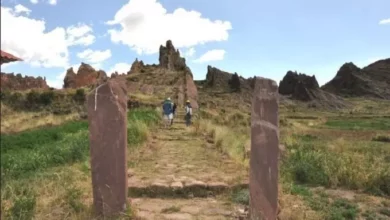The mystery of the Paracasians who lived 3,000 years ago in Peru

While studying the ancient Paracas culture that existed in southern Peru in the 4th and 3rd centuries B.C., archaeologist Julio Tello discovered a vast necropolis containing more than 300 burials that were at least 3,000 years old. The scientist was struck by the fact that many of the skulls had an unnaturally elongated shape. Another study of the “Paracas skulls” was recently conducted. The result of DNA analysis unequivocally demonstrates that they were not human. But what were they?
Archaeologists have often encountered unnaturally elongated skulls – they were found in Mexico, Egypt, Malta, Syria, and in the north of Iraq. The mystery of the strange anomaly was cleared up when an infant mummy was found with plaques tightly bandaged to its head.
It is clear that in the course of development, the clamped skull would deform. Later it turned out that this strange custom still exists in certain peoples. However, no matter how the shape of the cranium changes, the human brain’s volume and weight will remain the same.
So, the volume of “Paracas skulls” was 25% larger than the average, and the brain was, therefore, 60% heavier. So the shape of the “Paracas skull” is not the result of deliberate deformation of the bones, but what?
For years, scientists simply refused to comment on the unexplainable fact, leaving the honor of solving the mystery to future generations. Every now and then, attempts have been made, and in 2014 there was another one.
Juan Navarro, owner, and director of the Paracas Historical Museum, allowed samples of hair, teeth, bones, and skin to be taken from 5 of the 35 skulls in his possession for DNA analysis. For the sake of the purity of the experiment, the specialists were not told what kind of material they were given for research.
According to the conclusion of the examination, “the samples under study revealed mitochondrial DNA with mutations not previously found in either humans or primates. Simply put, the owners of the elongated skulls were not Homo Sapiens and descended from anyone but apes.
According to the scientist Brian Foster, the species, if it could have been in contact with humans, the birth of offspring from such mixed marriages was 100% ruled out.
Variants of “accidental mutation” and “a joke of nature” are excluded. More than 300 skulls found in Paracas, forced to admit that 3,000 years ago in southern Peru, for a long time, there was a large tribe of human-like creatures, biologically unrelated to humans. Who were they?
- Option 1: Another intelligent race that existed on Earth at the same time as humans.
- Option 2: colonists from another planet who tried to establish themselves on Earth (or the crew of a crashed starship and their descendants).
This goes some way to explaining the strange custom of deforming the skulls of infants. Apparently, the bearers of elongated skulls possessed abilities that humans were deprived of. So parents tried to change the shape of their child’s head, hoping that the unusual abilities of “eggheads” would come with it.
But, in any case, the ancient Paracasians could not establish themselves on the planet, ceded it to man. They either disappeared or (which is highly unlikely) continue to exist to this day, avoiding contact with humans.
And the final, final chord – a team of archaeologists led by Damian Waters discovered three elongated skulls “a la Paracas” in Antarctica. Until now, no human remains had been found on the southern continent.
The members of the Waters expedition wanted to be the first but found even more than they had planned. As for an explanation for the strange find, let your imagination run wild and try to find it yourself.
To get the latest stories, install our app here.




